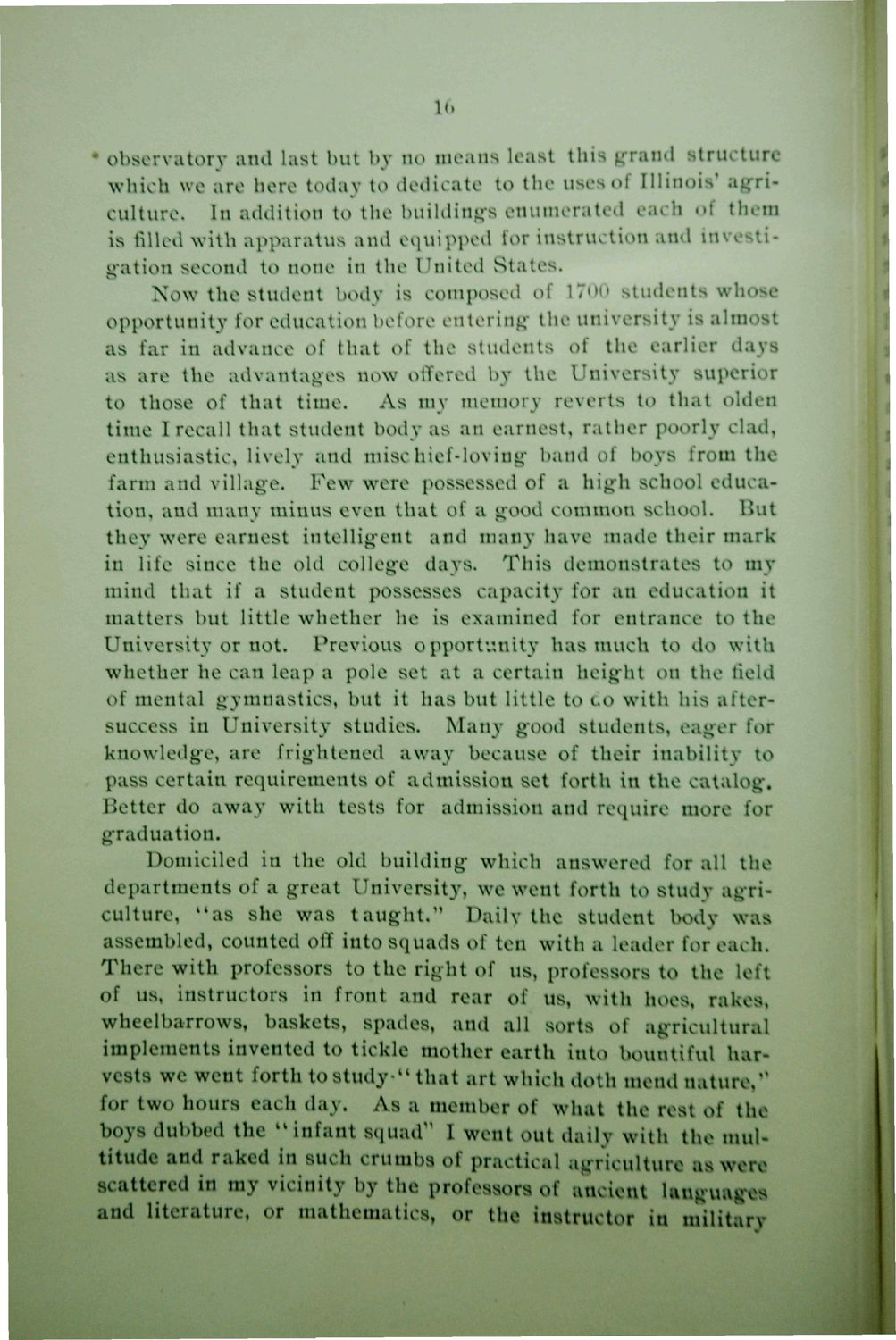| |
| |
Caption: Dedication - Ag Building
This is a reduced-resolution page image for fast online browsing.

EXTRACTED TEXT FROM PAGE:
1<1 • observatory and last but by no means least this grand structure which we are here today to dedicate to the uses of Illinois' agriculture. In addition to the buildings enumerated each of them is filled with apparatus and equipped for instruction and investigation second to none in the United States. Now the student body is composed of 1700 students whose opportunity for education before entering the university is almost as far in advance of that of the students of the earlier days as are the advantages now offered by the University superior to those of that time. As my memory reverts to that olden time I recall that student body as an earnest, rather poorly clad, enthusiastic, lively and mischief-loving1 band of boys from the farm and village. Few were possessed of a high school education, and many minus even that of a good common school. But they were earnest intelligent and many have made their mark in life since the old college days. This demonstrates to my mind that if a student possesses capacity for an education it matters but little whether he is examined for entrance to the University or not. Previous opportunity has much to do with whether he can leap a pole set at a certain height on the field of mental gymnastics, but it has but little to to with his aftersuccess in University studies. Many good students, eager for knowledge, are frightened away because of their inability to pass certain requirements of admission set forth in the catalog. Better do away with tests for admission and require more for graduation. Domiciled in the old building which answered for all the departments of a great University, we went forth to study agriculture, " a s she was taught." Daily the student body was assembled, counted off into squads of ten with a leader for each. There with professors to the right of us, professors to the left of us, instructors in front and rear of us, with hoes, rakes, wheelbarrows, baskets, spades, and all sorts of agricultural implements invented to tickle mother earth into bountiful harvests we went forth to study-" that art which doth mend nature/' for two hours each day, As a member of what the rest of the boys dubbed the "infant squad" I went out daily with the multitude and raked in such crumbs of practical agriculture as were scattered in my vicinity by the professors of ancient languages and literature, or mathematics, or the instructor in military
| |